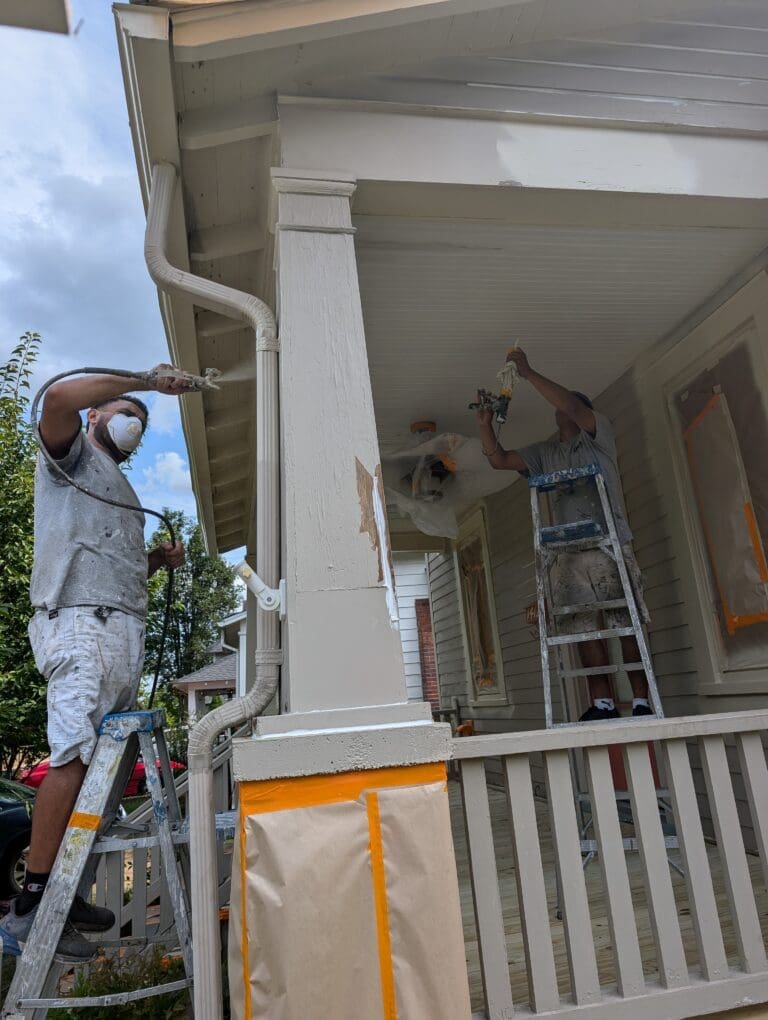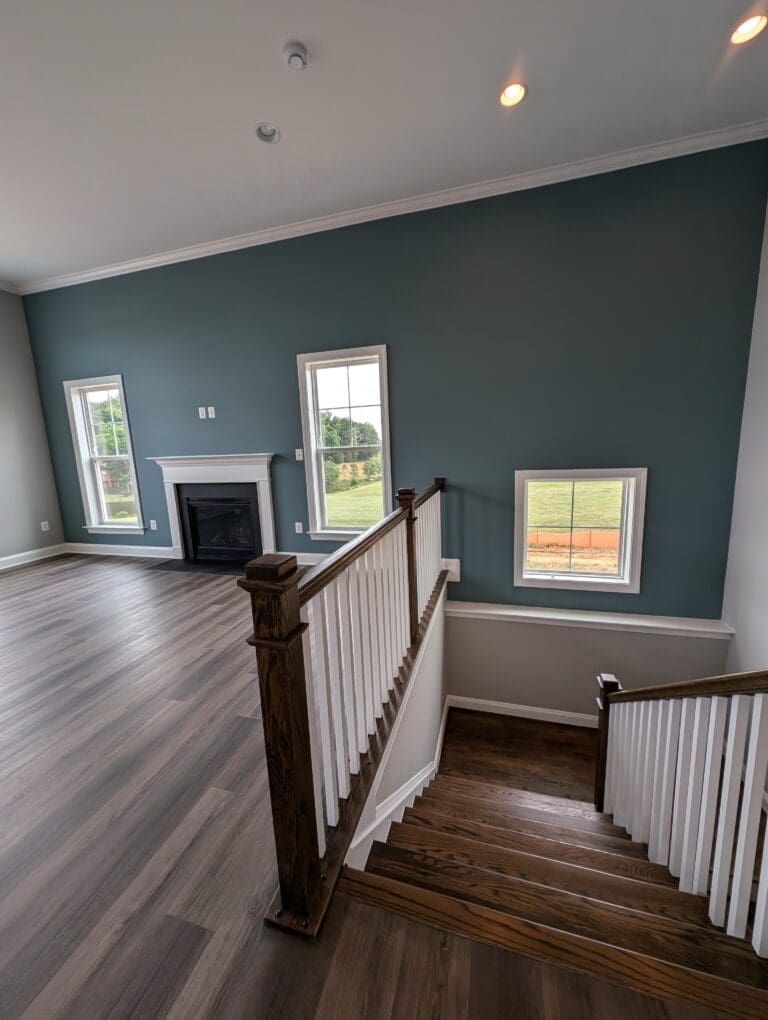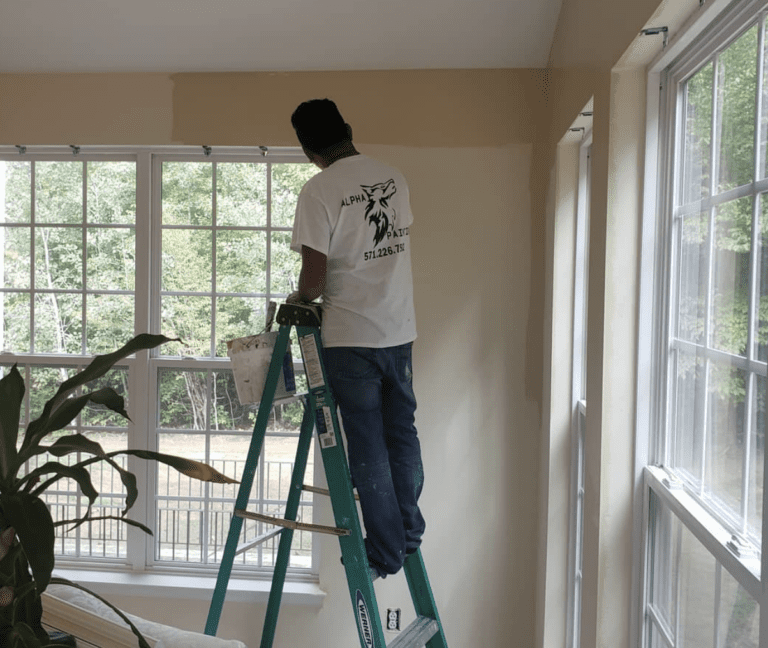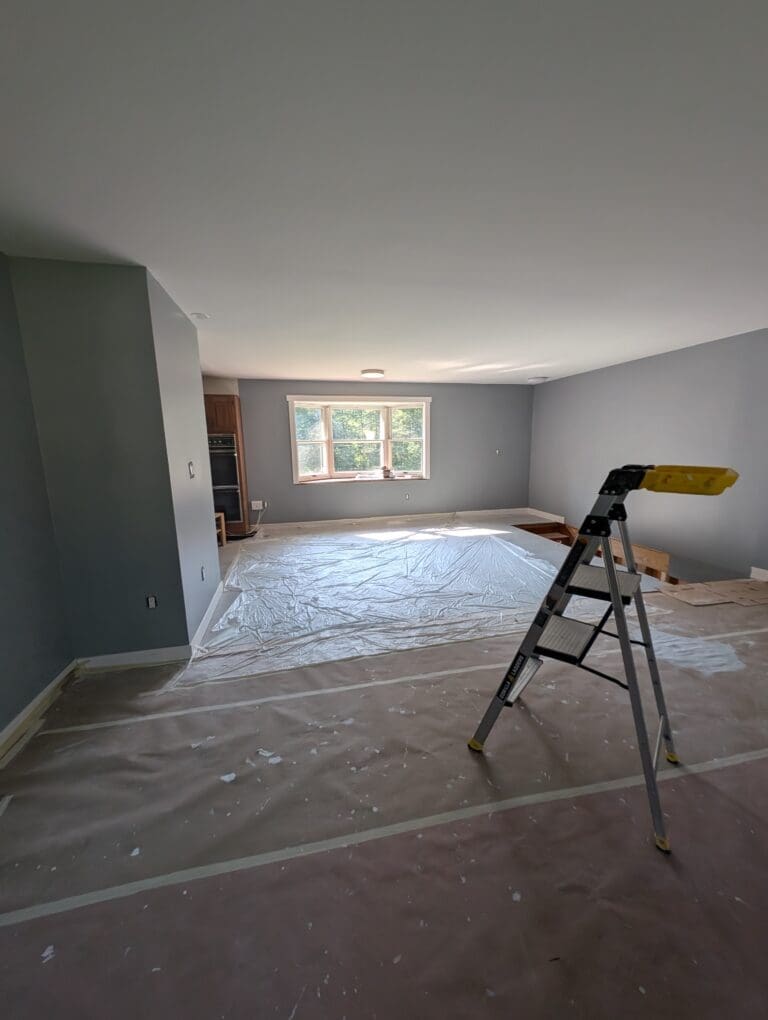Deck vs. Fence Painting: Choosing the Right Finish for Outdoor Wood in VA Climate
Wood exposed to Virginia’s climate takes a beating every season. Summer heat, sudden rainstorms, heavy humidity, and winter freezes all leave their mark. Decks and fences, in particular, see the most wear because they stand fully exposed to sun and moisture. Many homeowners ask the same question: What’s the best finish for my deck or fence so it lasts and looks great? The answer depends on how the surface will be used, how much maintenance you’re willing to commit to, and what kind of finish suits Virginia’s weather patterns.
Professional painters who work in Fredericksburg and surrounding areas, like our team at Alpha Painting, often guide homeowners through these choices. The right finish not only improves appearance but also prevents costly repairs from wood rot, splitting, and fading.
Table of Contents
How Virginia’s Climate Affects Outdoor Wood
Outdoor wood surfaces in Virginia go through a constant cycle of expansion and contraction. The hot sun causes wood fibers to dry out and shrink, then moisture from rain or humidity makes them swell again. This repeated cycle creates cracks, warping, and splintering. Add the occasional snow and ice, and you have year-round stress on your deck or fence.
Another factor is UV radiation. Direct sunlight bleaches wood and breaks down lignin, the natural glue that holds fibers together. Left unprotected, the wood takes on a gray, weathered look and loses strength over time. Paints and stains with UV blockers slow down this degradation, but their effectiveness varies depending on the product and how well it bonds to the surface.
These climate challenges make the choice of finish especially important. A product that works well on an indoor project may fail quickly outdoors, and a finish that suits a fence may not hold up on a deck where people walk daily.
Differences Between Decks and Fences
Decks and fences both serve as outdoor structures, but they face very different conditions. A deck is a high-traffic surface. Furniture scrapes across it, foot traffic grinds dirt into it, and standing water often collects on horizontal boards. Fences, by contrast, have almost no foot traffic. They stand vertical, shedding most rainwater easily, though they’re fully exposed to sunlight.
This means the finish chosen for a deck must withstand abrasion and resist peeling under constant wear, while a fence finish should focus on UV protection and water resistance. A product that excels on one structure may fail quickly on the other.
Paint vs. Stain: The Basics
Homeowners generally choose between paint and stain for outdoor wood. Both create a protective barrier, but the level of protection and appearance differ.
Paint sits on top of the wood, creating a film that completely hides the natural grain. It offers excellent UV protection and water resistance but can peel if moisture penetrates the wood from below. Stain, on the other hand, soaks into the surface. It enhances the natural look of wood while still offering varying degrees of protection depending on whether it’s transparent, semi-transparent, or solid.
On decks, stains are often more forgiving because they penetrate and don’t peel the way paint can. On fences, either option can work, but solid stains or paints give the best UV protection, especially in sunny yards with little shade.
Best Finishes for Decks in Virginia
Deck finishes must strike a balance between durability, appearance, and ease of maintenance. Transparent stains look attractive but require frequent reapplication in Virginia’s climate. Semi-transparent stains offer longer life while still showcasing some of the wood’s character. Solid stains and specialized deck paints provide the most protection but completely hide the wood grain.
Most professionals recommend avoiding regular exterior house paint on decks. It forms a thick layer that eventually cracks and peels under foot traffic. Specialized deck coatings or high-quality solid stains perform better, as they are designed to flex with the wood and handle abrasion.
Another consideration is slip resistance. Some deck coatings come with additives that improve traction when the boards are wet. This is especially useful in humid Virginia summers where moisture lingers on surfaces.
Ultimately, the best approach for decks is choosing a product specifically engineered for horizontal surfaces and being consistent with maintenance. A deck that is cleaned yearly and recoated as soon as it shows signs of wear will last decades longer than one that’s neglected.
Best Finishes for Fences in Virginia
Fences benefit from a slightly different strategy. Since they don’t bear weight, the primary goal is shielding against sun and rain. A semi-transparent stain is often the sweet spot, offering rich color while still highlighting the wood texture. It soaks in deeply, making it less prone to peeling.
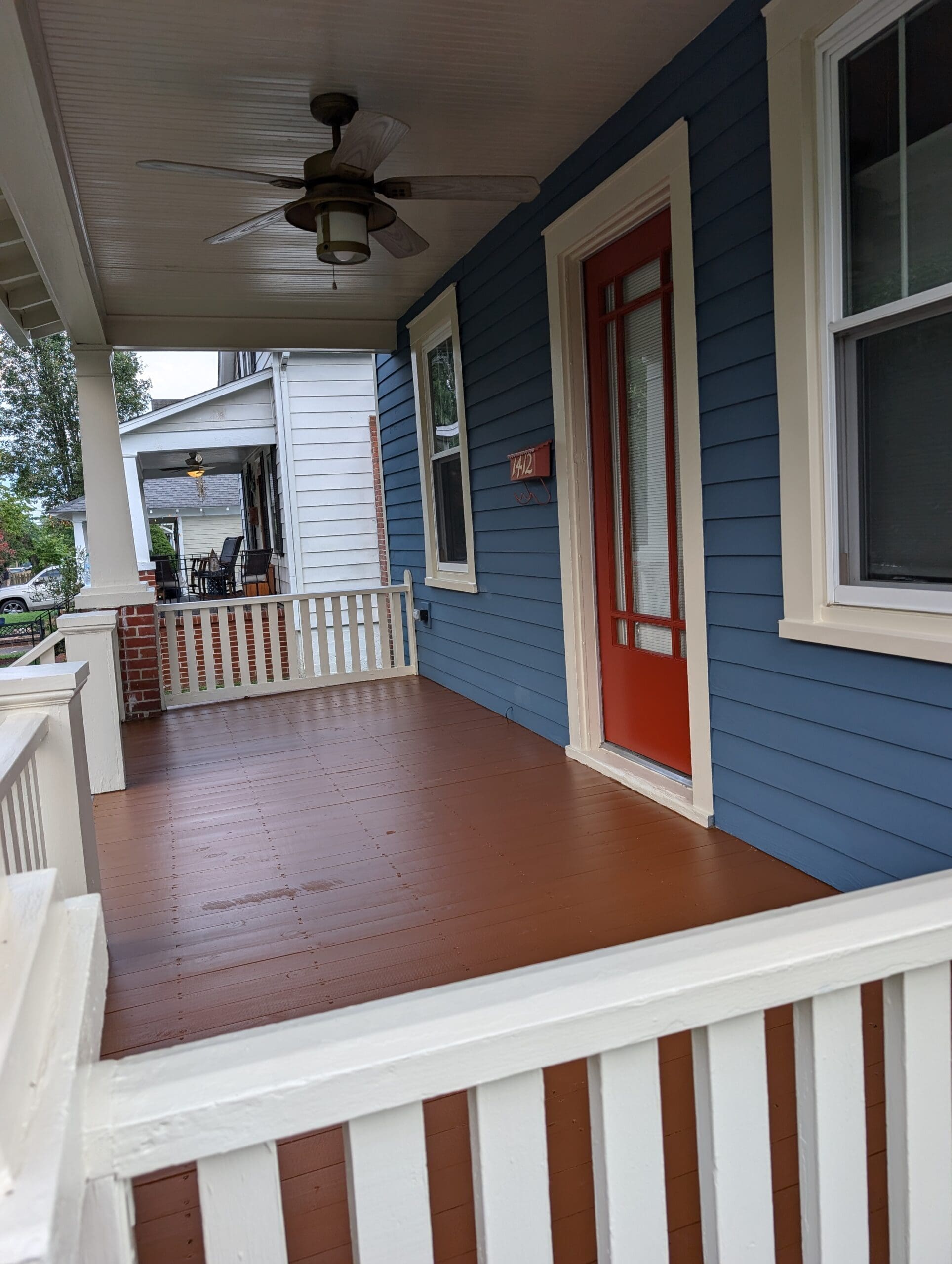
Solid color stains or exterior paints also work well on fences, especially if the homeowner prefers a uniform look or wants the fence to match the trim of the house. These finishes provide excellent UV protection and can last longer before reapplication is needed. The main drawback is that once a fence is painted or covered in a solid stain, switching back to a natural look is difficult without stripping.
Because fences stand vertically, they shed water more efficiently than decks, which means finishes often last longer before maintenance is needed. Homeowners can expect to reapply stain every 3–5 years, depending on sun exposure, while painted fences may last 5–7 years before showing wear.
Rooms That Benefit Most from Low-VOC Paints
No finish, no matter how expensive, will last without proper surface preparation. Outdoor wood gathers dirt, mildew, and old coatings that prevent new finishes from bonding correctly. Skipping prep work often leads to premature failure.
Preparation typically involves cleaning with a wood-safe detergent, rinsing thoroughly, and allowing the surface to dry completely. Older decks and fences may also require sanding to remove rough spots or flaking paint. In cases where mildew is present, a mild bleach solution may be needed to kill spores before finishing.
Moisture content is another factor. Wood should be dry before applying paint or stain. Trapped moisture pushes against the coating, leading to bubbling or peeling. Professional painters often use moisture meters to ensure wood is at the right level before sealing.
Maintenance Cycles for Long-Term Protection
Choosing a finish isn’t just about the first application; it’s also about long-term upkeep. Decks, because of their heavy use, generally need maintenance every two to three years regardless of the product. High-traffic areas may require touch-ups sooner.
Fences, on the other hand, can often go longer between applications, especially if stained. Homeowners should still inspect them yearly for signs of fading, mildew, or water penetration. Early touch-ups help prevent more labor-intensive work down the road.
Keeping up with cleaning also makes a huge difference. A deck or fence that’s hosed down and scrubbed lightly once or twice a year will resist mildew and dirt buildup, extending the life of the finish.
Cost Considerations
Budget often plays a role in the decision between paint and stain. Transparent stains are less expensive upfront but need more frequent reapplication. Solid stains and paints cost a bit more initially but stretch the maintenance cycle. Deck-specific coatings tend to be pricier but are engineered for maximum durability under harsh conditions.
When weighing costs, it’s worth factoring in labor. A properly applied finish that lasts five years may be more cost-effective than a cheaper option that requires reapplication every two years. Many homeowners in Virginia choose professional services not just for the initial result but to avoid costly mistakes that shorten the life of the coating.
Making the Right Choice for Your Property
Deciding between painting or staining your deck or fence in Virginia comes down to how the surface will be used, the look you want to achieve, and how much time you’re willing to dedicate to maintenance. Decks need tougher finishes designed for foot traffic, while fences have more flexibility in appearance and product choice.
Wood is one of the most beautiful materials for outdoor structures, but it requires consistent care in Virginia’s unpredictable climate. Choosing the right finish—and reapplying it on schedule—protects your investment and keeps your outdoor spaces looking sharp year after year.



